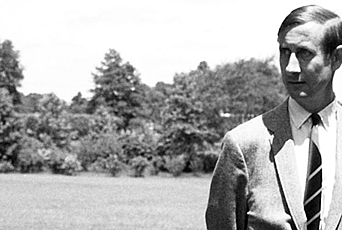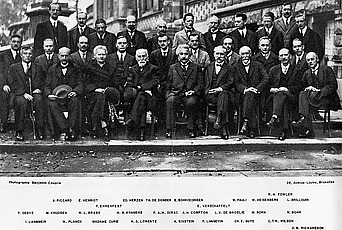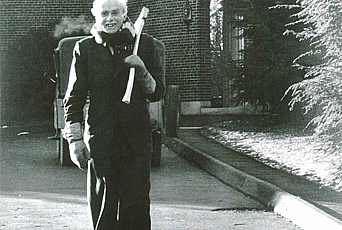1948–1950
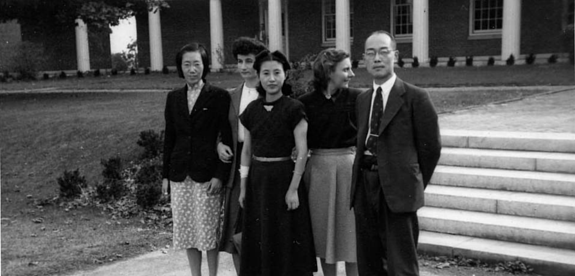
It all began with a cable from Oppenheimer that I received on March 10, 1948, in Trondheim, Norway:
ON THE RECOMMENDATION OF BOHR AND HEITLER I AM GLAD TO OFFER YOU MEMBERSHIP SCHOOL OF MATHEMATICS FOR THE ACADEMIC YEAR 1948 – 1949 WITH STIPEND OF $3500. ROBERT OPPENHEIMER.
I did not know that this was a great offer. I did not even know where Princeton was, but as a general rule, I would rather say “yes” than “no.” I was then on leave from the French Centre National de la Recherche Scientifique (CNRS), having been awarded a Rask-Oersted Fellowship for the academic year 1947–48 at the Nordiska Institutet för Teoretisk Fysik in Copenhagen.
In retrospect, I think that in the days of the Marshall plan, Oppie was looking for a couple of European young postdocs who would benefit from a year at the Institute. Did I benefit? More than I could ever have imagined. During my two-year stay, 1948–50, Bryce DeWitt, a postdoc at the Institute, 1949–50, asked me to marry him, and I conceived the Les Houches Summer School as my self-imposed condition for marrying a “foreigner.” Thanks to Freeman Dyson and Richard Feynman, I learned about functional integration and am still fascinated by it.
My latest two books grew out of my stay at the Institute from 1948–50: Functional Integration, Action and Symmetries (with P. Cartier) (Cambridge University Press 2006), and The Pursuit of Quantum Gravity, Memoirs of Bryce DeWitt from 1946 to 2004 (Springer 2011).
I hope that my article in the Institute Letter will reflect my debt to the Institute.
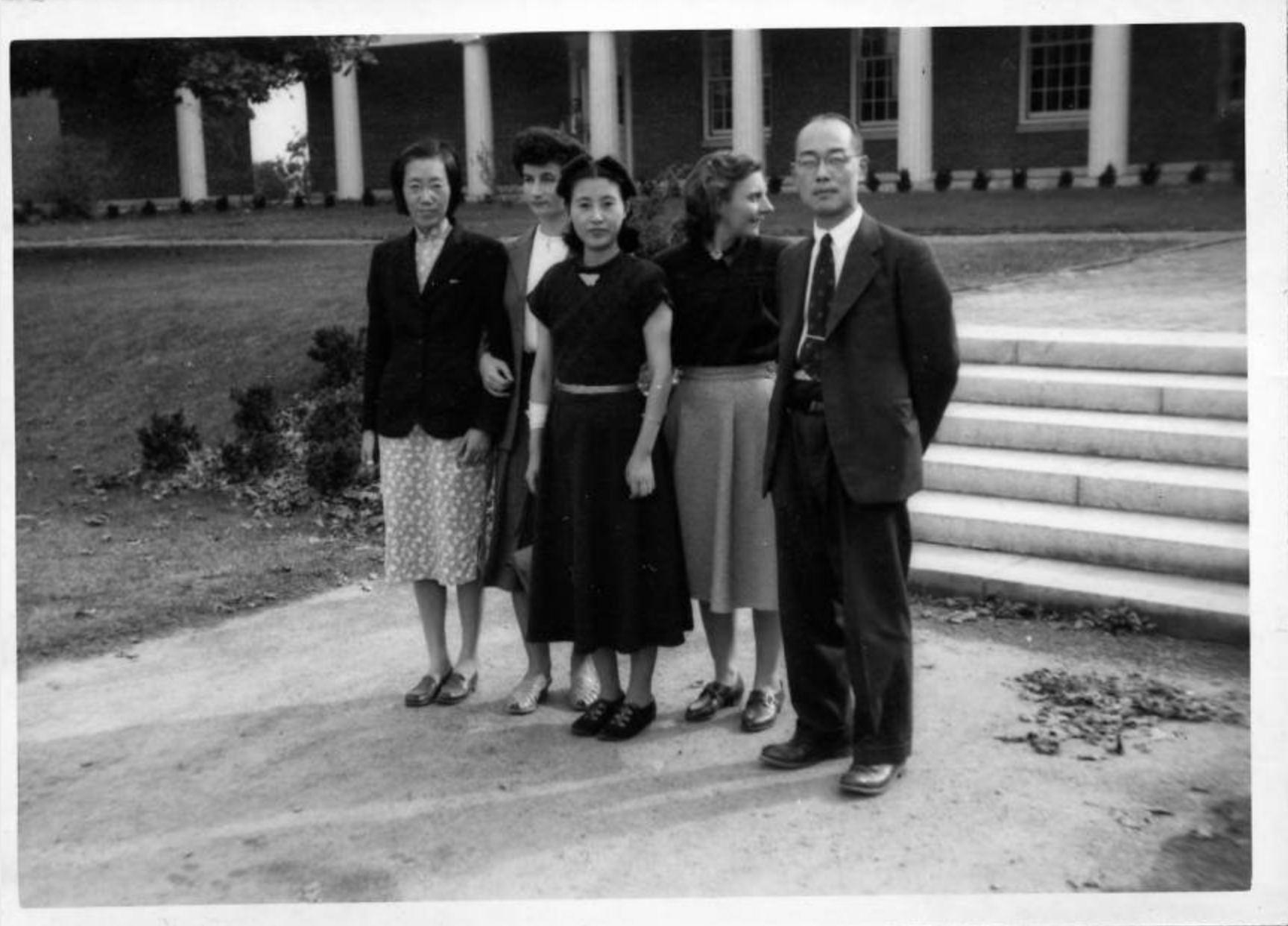
First Impressions
I came by ship, traveling first class, my stepfather having upgraded my CNRS travel allowance. He wanted to be sure that my traveling companions would meet his approval; he came on board the ship to choose my assigned table. It turned out to be a table of Dominican Fathers, but I was sick most of the time and hardly met them. As for meeting eligible young men, he had arranged for Bernard Gregory, then a graduate student at MIT, later to become Directeur Général of CERN, to look after me. He did. He came to Princeton to be my escort at the Institute’s 1949 Spring Dance. He did not come in 1950.
Here are a few snapshots of my arrival:
- People would respond to my thanks with “You’re welcome.” I thought they all remembered Lafayette and were welcoming a compatriot of Lafayette.
- Along the road, I read “Slow men at work” as “Slow men, at work.” I could not read it as “Slowly, men at work” because in school I had been taught that adjectives could not be used as adverbs. I concluded that people in the U.S. were very considerate of their handicapped workers.
- I saw a panel “Antiques, old and new.” I knew that in France we sometimes sold copies as genuine antiques, but we did not publicize it. I concluded that people in the U.S. were incredibly honest.
I arrived at the Institute with a glowing picture of the United States. It was shattered when Oppenheimer greeted me as “Cécile.” I was Cécile only to my family and closest friends; to anybody else, I was “Mademoiselle Morette.” I felt violated and treated like a maid. Nowadays I am happy to be Cécile to everybody.
The Institute had reserved a nice suite for me at the home of the Frothingham’s, 9 Ober Road. Shortly after I arrived, Mrs. Wigner asked me if I could spend the evening at their house. Having happily accepted, I found myself babysitting Martha, as the parents were leaving their home. I had never heard of babysitting. The worst was that the supper left for Martha consisted of a wienie and some carrot sticks; judged from the point of view of a French upbringing this was totally unacceptable for a toddler. In retrospect, I doubt that a recently arrived male postdoc would have been asked to babysit.
A French background is often a mystery to someone who has not lived many, many years in France. Who, for instance, understands the difference between an Ingénieur des Mines and an Ingénieur au Corps des Mines? An Ingénieur des Mines is a mine engineer. An Ingénieur au Corps des Mines is a top graduate from l’Ecole Polytechnique, France’s most prestigious school (so say most people). An Ingénieur au Corps des Mines—for example, physicists like Bernard Gregory, Albert Messiah, Roger Balian—is not likely to be a professional mine engineer. One finds Ingénieurs au Corps des Mines in top positions in the public and the private sector.
Oppenheimer
Oppenheimer misunderstood my background. I would wear the same frock day in and day out. I sewed a new one when spring came. I did not know how to drive a car. When Oppie asked me if my father could drive a car, I simply said “no.” My father (Ingénieur au Corps des Mines!) was the CEO of a large industrial complex, La Société Métalurgique de Normandie, and of an iron mine, Les Mines de Soumont. He had a chauffeur, and so did the family. Based on my appearance, Oppie assumed that I came from a disadvantaged family. Oppie and Kitty went out of their way to make me a woman of the world. When I realized the misunderstanding, it would have been unkind to correct the situation, and I happily remained their ward. It was not uncomfortable; it even had advantages:
- I was often invited for a martini at their house at the end of the day.
- For the 1949 Spring Dance, Bernard Gregory and I were the chosen couple invited to have supper at the Oppenheimer table.
- Oppie gave my name to C. M. G. Lattès, the Director of the Centro Brasileiro de Pesquisas Fisicas, who had asked Oppie to recommend a lecturer for the 1949 summer, the very year the Center was established. It was a great opportunity for me. Feynman had been invited. We lectured daily. This course is the basis of a book1 I wrote at the Institute upon my return from Rio.
- Oppie invited me to stay for a second year at the Institute. He thought I was worried about returning to France. I had not told him that Laurent Schwartz had invited me to join the Université de Nancy as Maitre de Conférences, a tenured position; but this position could most likely be postponed.
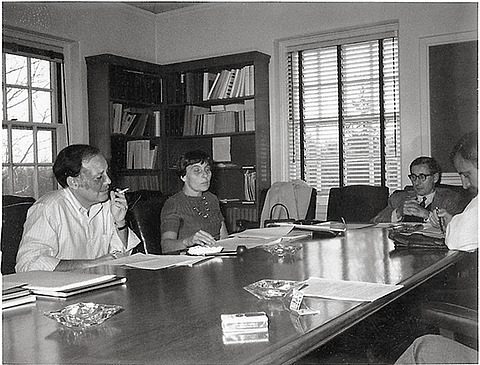
Green Card
The first thing I did when I arrived in Rio during the 1949 summer was to apply for a green card. I was not planning to stay in the U.S.; I only wanted to make visits to the U.S. with less hassle. My green card was issued on September 17, 1949, and I remained a legal immigrant until April 26, 1999. Why did it take me fifty years to become a U.S. citizen? I simply did not want to say the Oath of Allegiance that restricted my French citizenship inappropriately. However, after examining more closely the situation, I decided that the best for me was to take the U.S. citizenship and to take steps to have the Oath of Allegiance reworded. (Copy of my correspondence with Congressman Lloyd Doggett is available upon request.)
The first new Member I saw when I arrived at the Institute for my second year, 1949–50, was a “Schwinger boy” and I was pleased to be able to lord my seniority over a Schwinger boy. His name was Bryce Seligman DeWitt.
Two Physics Today articles capture very well life at the Institute in 1948–50:
- Freeman Dyson’s letters to his family in November 19482;
- An interview by Toni Feder, “Path integrals, Les Houches, and other adventures of Cécile DeWitt-Morette.”3
Dyson had invited me to spend a long weekend away from Princeton to visit Feynman at Cornell. This expedition is so well described in a couple of letters from Dyson to his parents that I cannot summarize it (see box, page 11). I was so enchanted by the path integral formalism presented by Dyson and Feynman in seminars they gave at the Institute during the fall of 1948 that I wanted to develop it from its magical (heuristic) beginning into a practical (mathematically robust) tool. My first paper on the subject, “On the Definition and Approximation of Feynman’s Path Integrals,”4 deals with:
- Volume elements in the infinite dimensional domain of integration;
- The expansion of the action functional around its value for a classical path, i.e., the background method, WKB approximations, and beyond;
- Paths taking their values in spacetime.
In its original form this paper was easier to read, but Oppenheimer suggested excisions of well-known remarks (but new to me!) that I did not handle very well. Of course it took many years and many people to develop the ideas presented in this paper, and the work is still on the drawing board.
“Siblings”
Life at the Institute was delightful. Sharing discussions in the corridors, at lunchtime, and at teatime created a warm and friendly atmosphere. Think of the young postdocs as siblings ready to help each other. I often needed help because in France at that time there was no graduate program and I had never attended a graduate course. I recall being tutored on group theory by my office mate, Bruria Kaufman, and on Lagrangian and Hamiltonian dynamics by Léon Van Hove. Help was not limited to physics. When, in the summer of 1949, Verena Haefeli mentioned her plan to drive to California with her young daughter Katrin and her colleague Kurt Reidemeister, the “siblings” urged me to accompany her. They overestimated my abilities and the engine blew up at Lake Tahoe: I did not know about checking oil.
During the 1948 Christmas break, I decided to visit the U.S. with a French friend, then an instructor at Smith College. (The excuse given to the Institute was visiting the MIT cosmic ray lab at Echo Lake.) We felt that the only choice we had to make was to travel clockwise or counter-clockwise. We found ourselves in Houston dressed in skiing outfits ready for Echo Lake. In retrospect, this trip was hilarious. We felt very free, not knowing U.S. patterns of relationships and far away from our families. By the time they received our letters, the news was at least a week old, and their advice would not reach us for another week. Moreover, our families had a distorted vision of the U.S.; they were used to looking at French atlases where France and the U.S. are printed on the same size page. Stories of this 1948 Christmas trip are available upon request. Here I shall only recall a lovely dinner at Norman Kroll’s parents’ home in Houston. Norman was not there, but my Smith College friend was getting out of hand, and I needed to recreate a proper atmosphere so I called Norman’s parents.
Being in a male-dominated Institute was no problem. I was not going to marry a foreigner (anyone who was not French!), and I was not cognizant of patterns of behaviors between young people in the U.S. Life for me was simple. I recall two episodes where the other postdocs considered me as a woman.
They wanted to know if I could cook, and Quin Luttinger asked me to prepare a meal for them. I did it, after having sent an emergency cable for a recipe to my friend at Smith College.
Jack Steinberger had organized an overnight hike and wondered about my sleeping accommodation. “No problem,” said I. “I shall put a log between you and me.” He still mentions this!
Les Houches
One of the other “siblings,” Bryce DeWitt, had other views and, at the end of a day of canoeing, while we were having supper at my apartment, he asked me if I would marry him. My knee-jerk reaction (I had practice) was that I could not because he was a “foreigner.” He then left my apartment and went back to physics. But I was sad, very sad. The next morning I had a sudden, fully formed thought: If I created a summer school in a little village in the French Alps where twenty people would come to learn recent developments in physics presented by the authors themselves, I would have done something for France, and I could marry Bryce. I rushed to the phone and asked a very sleepy Bryce, “Does your offer still hold?” “Which offer?” (Years later he told me that he had asked, not offered, hence he did not remember any offer!) I proceeded to tell him my plan to create what became the Les Houches School. He understood that I had something to do before getting married. “Sure, good night.” (It was 7:30 a.m. for me; his bedtime.)
The school was officially created on April 18, 1951, and we were married on April 26, 1951. The rest has been told—or nearly. The idea of the school had come easily; there was a need, the need could be met if I marshaled the necessary collaborations, and if I found the money. I knocked at many doors. “Elle emmerdera la terre entière mais elle l’aura,” Pierre Auger would say affectionately. I knocked at the door of Pierre Donzelot, then Directeur des Enseignements Supérieurs, having carefully planned to knock when his secretary would be at lunch. In the lobby, I had pretended to be a secretary so that no factotum would stop me. Donzelot opened his door. I told him my story. He offered the money right away.
My Debt
My debt to the Institute covers much more than these recollections of 1948–50. Seeds were planted then. They have grown since in a variety of activities. I refer to a few publications5 for details.
I have a photo album rich in memories, but without captions! On top of the first page of the 1951 Les Houches photos, I have copied a phrase from a letter of Oppenheimer, but I have not kept the letter. Oppie’s phrase has kept me going many decades. “In overcoming all the difficulties, in making of this school something whose high standards were made possible by love, and love fruitful by scholarship . . . .”
1Particules Elémentaires (Hermann, Paris, 1951)
2Physics Today 42 (February 1989)
3Physics Today 61 (August 2008)
4Physical Review 81 (1951)
5Women in Chemistry and Physics: A Bibliographic Source Book, edited by Louise S. Grinstein, Rose K. Rose, and Miriam H. Rafailovich (Greenwood Publishing Group, Inc., Westport, Conn., 1993); Out of the Shadows, Contributions of Twentieth Century Women to Physics, edited by Nina Byers and Gary Williams (Cambridge University Press, 2006). See also the foreword by Freeman Dyson; Les Déchiffreurs, by Jean-François Dars, Annick Lesne, and Anne Papillault (Editions Belin, 2008); Dictionnaire des Créatrices, edited by Jean Schneider (Editions des Femmes, Paris, 2009)
